Animals Teaching Resources
Explore animal life in your science classroom with printable worksheets, classroom posters, and more teaching resources all about the different types of animals, their life cycles, characteristics and more!
This teacher-created collection includes a series of animal-focused teacher resources covering reptiles, birds, fish, mammals, and amphibians plus resources that classify a selection of vertebrates and invertebrates!
This comprehensive collection of teaching resources includes editable curriculum-aligned lessons on wildlife, endangered species and more — all ready to be printed and used in the classroom!
New to teaching this section of the science curriculum or looking for some fresh ideas? Read on for some tips on teaching about animal classification from our teacher team!
What Is Animal Classification? A Kid-Friendly Definition
In science class (and in professional study) animals are classified into groups based on physical and genetic characteristics. Scientists use a classification system called the Linnaean system to group different animals into progressively more specific categories, starting with the largest (and most inclusive group) and ending with the smallest and most specific group.
The categories are:
- Kingdom
- Phylum
- Class
- Order
- Family
- Genus
- Species
Helping students to remember these categories of biological animal classification, you might want to use a mnemonic such as:
- King Philip came over from Germany swimming.
- King Philip came over for good spaghetti.
- King Philip came over for good soup.
Sometimes the word "domain" is added to the top of the animal classification list, and in those cases you can add the word "dear" to your mnemonic sentences to help your students recall them all.
In the Linnaean system, every animal in nature is assigned a unique scientific name. The name includes their genus and species and it's used globally to refer to that animal — so, for example, a dog is a dog, but it's also a "canis lupus familiarise" according to its scientific name.
The animal classification system is used all around the world to help scientists understand the relationships between different animals and how they evolved over time.
Teaching About Animal Classification in Elementary School
How in-depth should your lesson planning be for animal classification? In the elementary grades, learning classifications of animals sets the stage for understanding how important this system is when scientists are studying animals in the natural world.
Consider this: In elementary school, students typically learn about the basic categories of animal classification, such as mammals, birds, fish, reptiles, and amphibians.
Your animal classification lessons can extend into learning about specific examples of animals within each category, such as lions and elephants for mammals, and eagles and penguins for birds.
By the time they head off to high school, students should already know the characteristics that define each group — such as the presence of fur or feathers (in birds) or most mammals' ability to give birth to live young. Students should also know about the classification of animals within each group, such as the different types of mammals or birds.
Ready to get started? Explore the resources in this collection!
- Free Plan
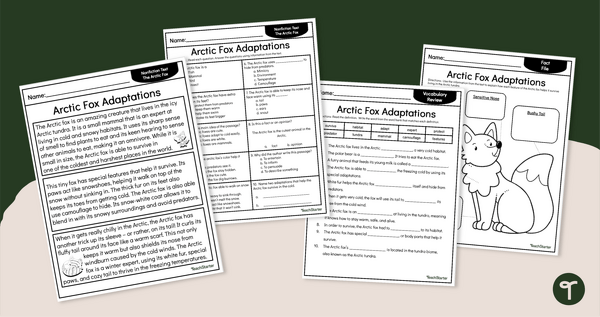
Arctic Fox Adaptations - Free Comprehension Worksheet
Read and learn about Arctic fox adaptations with a set of printable Reading Comprehension Worksheets for 2nd and 3rd grade.
- Plus Plan
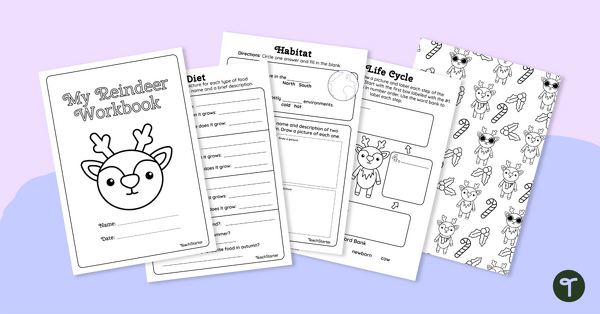
Reindeer Research Guide - Mini Workbook
Research all about reindeer and use this guided research template to organize student learning.
- Plus Plan
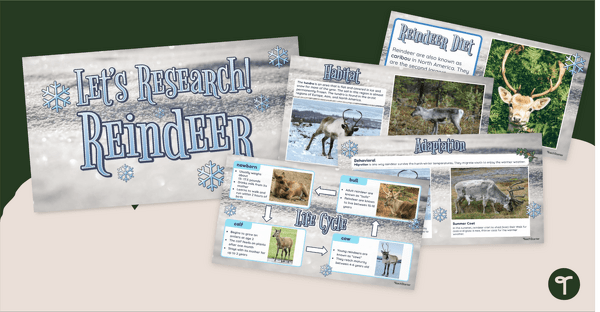
Reindeer Research - Instructional Slide Deck
Use an animated instructional slide deck to guide your students through a reindeer research project!
- Free Plan
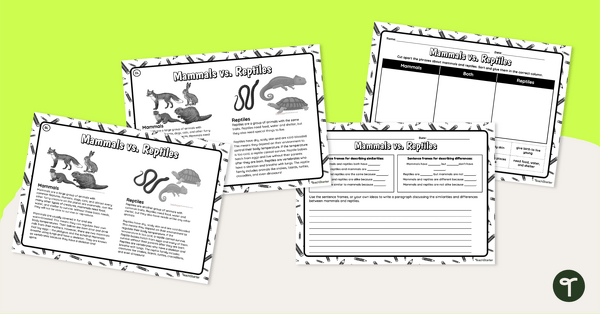
Paired Passage Worksheets-Mammals vs. Reptiles
Compare mammals vs. reptiles and add to your reading instruction with leveled nonfiction, compare and contrast passages and worksheets.
- Free Plan
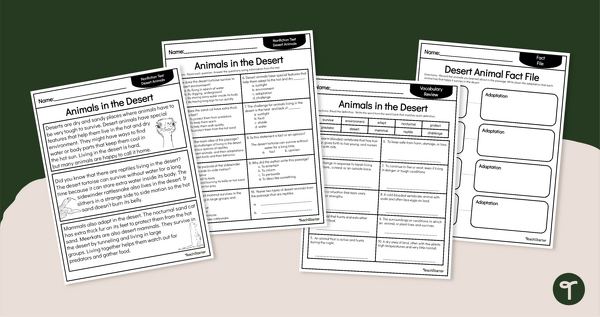
Free Desert Animal Adaptations Worksheets - Comprehension
Discover desert animal adaptations with a printable reading comprehension worksheet pack for 3rd grade.
- Free Plan
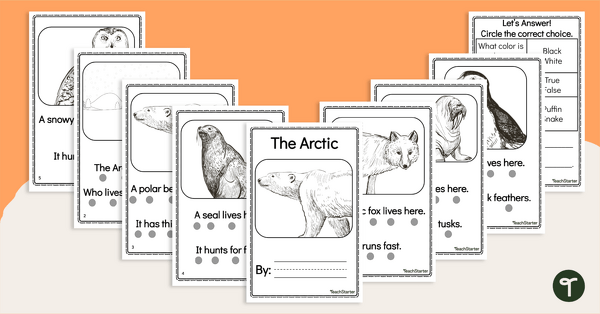
In the Arctic - Free Decodable Book
Engage your students and inspire them to read and learn about life in the Arctic with a printable book for 2nd grade.
- Free Plan
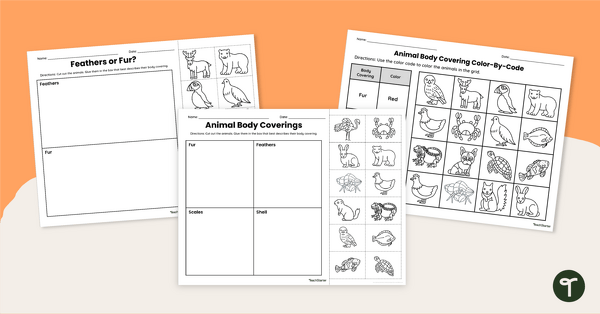
Animals With Scales, Fur, Shells and Feathers Worksheet Pack
Investigate different animal body coverings by sorting and coloring animals with feathers, fur, scales and shells.
- Plus Plan
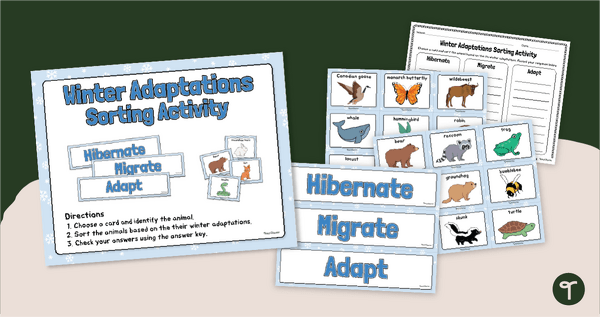
Winter Survival Adaptations - Sorting Activity
Match the animals with the behavioral adaptation that helps them survive the winter in this printable animal adaptation sorting activity.
- Plus Plan
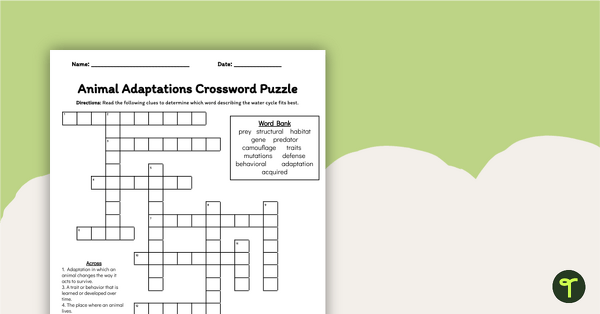
Animal Adaptations Crossword Puzzle
Use an Animal Adaptations Crossword puzzle to review concepts related to physiological, structural, and behavioral adaptations.
- Free Plan
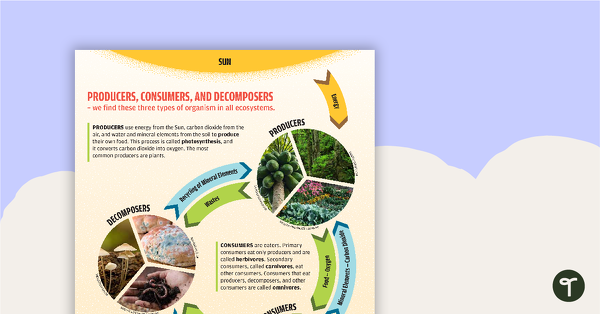
Producer, Consumer, Decomposer - Poster
A poster explaining the roles of the Sun, producers, consumers, and decomposers in the food chain.
- Plus Plan
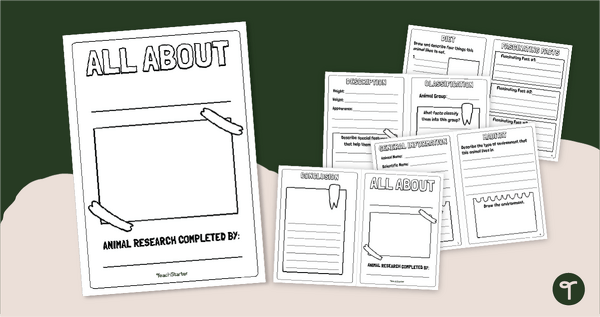
Informative Writing - Animal Research Task
Use a printable animal research organizer booklet for students to record facts about animals when learning to write informative texts.
- Free Plan

Species Survival! Science Word Search
Explore vocabulary related to species survival and sustainability with a differentiated word search.
- Free Plan
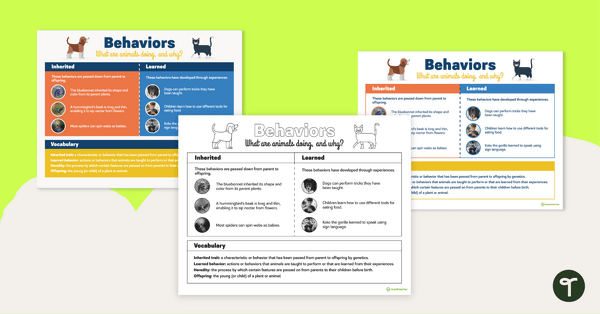
Inherited versus Learned Behaviors Poster
Explain the difference between inherited and learned behaviors with a set of printable anchor charts.
- Free Plan
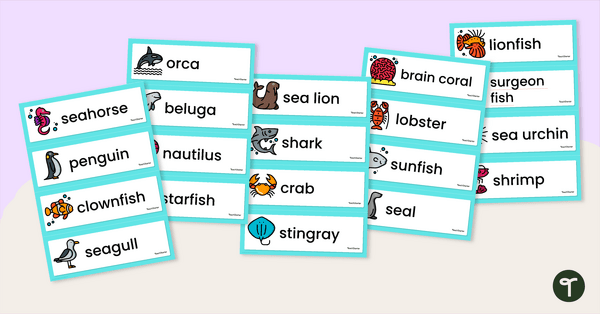
Ocean Animals Word Wall Cards with Pictures
Introduce your students to the amazing animals in the sea with an illustrated ocean animal word wall.
- Free Plan
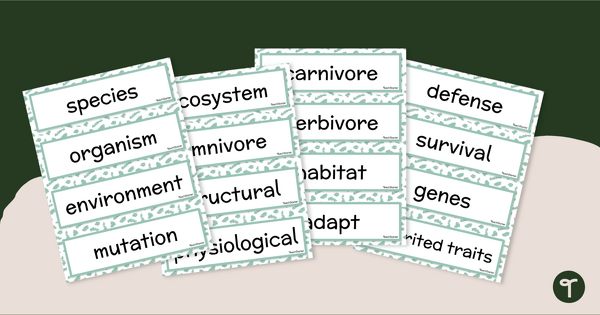
Plant and Animal Adaptations – Word Wall Vocabulary
Build scientific vocabulary skills with a printable display of words relating to plant and animal adaptations.
- Plus Plan
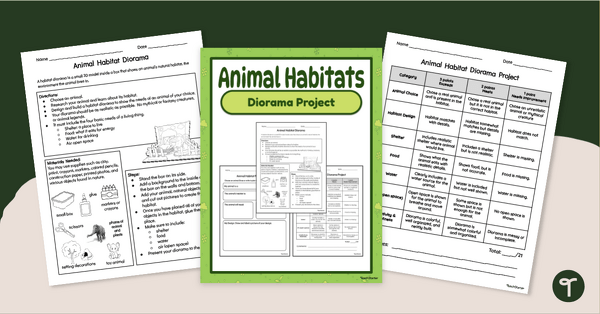
Animal Habitat Diorama Project
Plan an Animal Habitat Project for your students with our animal habitat diorama project pack.
- Plus Plan
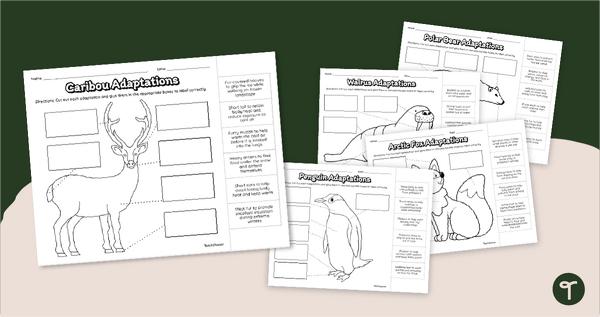
Adaptive Animals of the Arctic - Adaptations Worksheets
Explore the adaptations of polar animals and discover how they help them survive with a set of cut-and-paste labeling activity sheets.
- Plus Plan
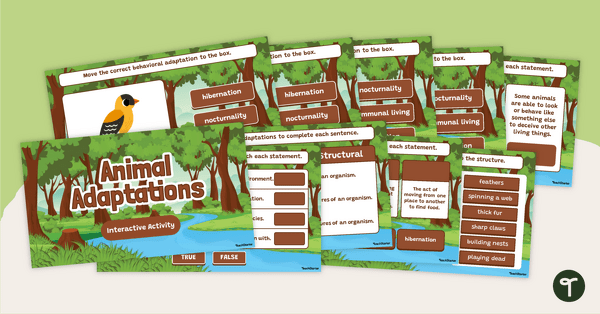
Animal Adaptations Digital Learning Activity Slides
Discover a variety of structural, behavioral, and physiological adaptations with an Animal Adaptations Digital Learning activity.
- Plus Plan
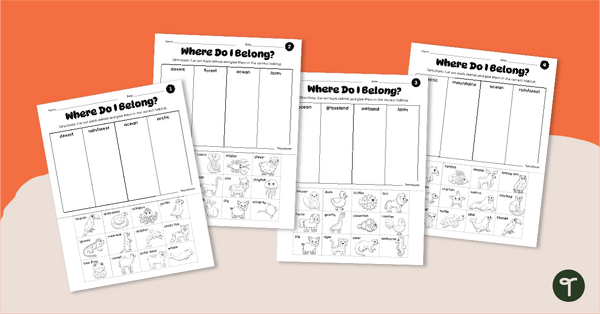
Animals and Their Habitats - Cut and Paste Worksheets
Match the animals and their habitats with a pack of printable cut and paste worksheets.
- Plus Plan
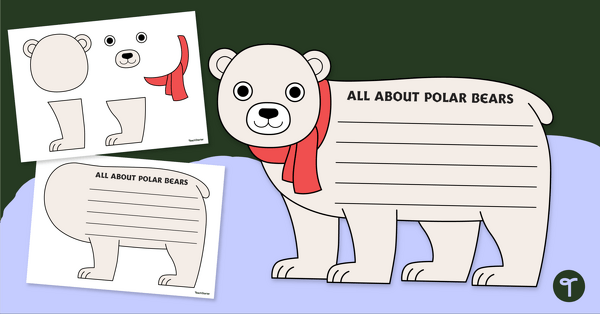
Polar Bear Craft Template
Pair a polar bear craft and informational writing to create a fun winter animals bulletin board.
- Plus Plan
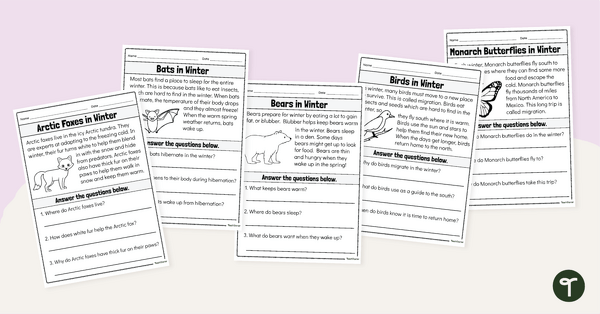
Animals in Winter - 1st Grade Reading Worksheets
Learn about animals in winter with a printable pack of 1st Grade Reading Worksheets.
- Free Plan
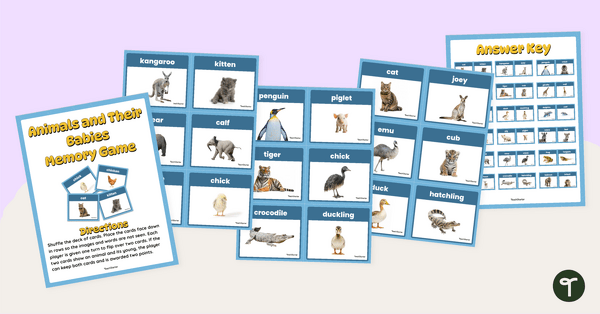
Animals and Their Babies Memory Game
Play a fun Memory-style animal game for kids to learn about animals and their babies.
- Free Plan
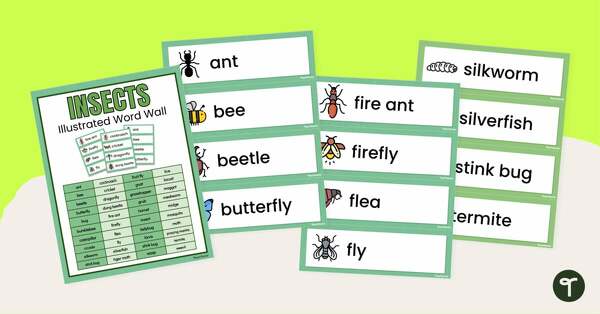
Insect Word Wall - Insect Names and Pictures
Use a printable insect word wall to introduce your students to the creepiest, crawliest creatures on the planet.
- Plus Plan
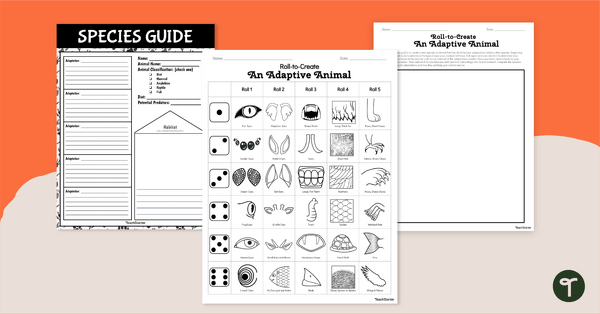
Roll to Create an Animal - Adaptations Activity
Roll to choose cool animal adaptations for a mystery animal using a fun dice game and report template.
- Plus Plan
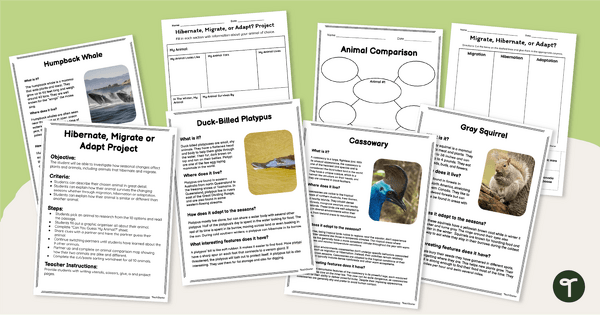
Adapting, Migrating, & Hibernating Animals Research Project
Set this classroom project for students to explore the topic of how seasons affect animals, and develop a species-specific profile on a chosen animal.
- Free Plan
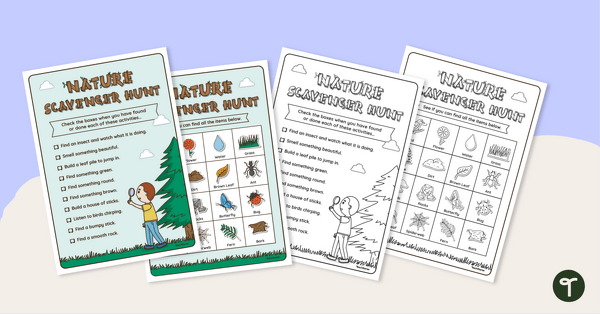
Free Printable Nature Scavenger Hunt
Make outdoor play a learning opportunity with our free printable nature scavenger hunt PDF.
- Plus Plan
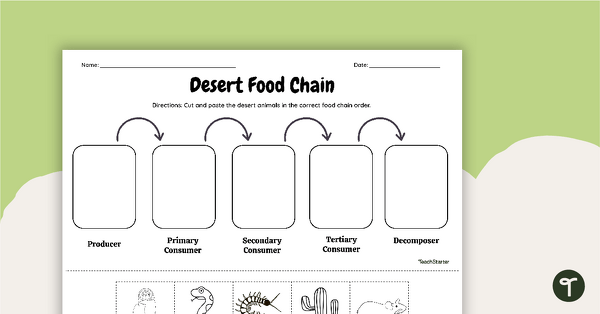
Desert Food Chain - Cut and Paste Worksheet
Create a desert food chain to show how energy flows between organisms with this cut-and-paste worksheet.
- Free Plan
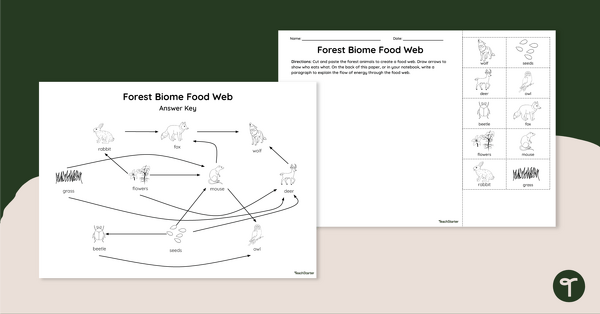
Forest Biome Food Web – Worksheet
Challenge students to create a food web and explain how energy flows between organisms with this cut-and-paste worksheet.
- Plus Plan
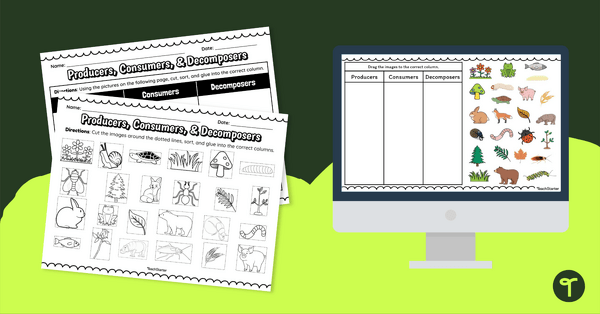
Producers, Consumers, and Decomposers – Interactive and Printable Activity
Sort producers, consumers, and decomposers, with this printable and interactive activity.
- Free Plan
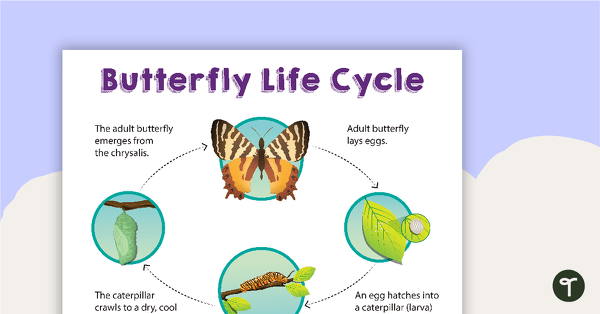
Butterfly Life Cycle Poster and Worksheet
An educational poster and worksheet about the stages of a butterfly's life cycle.
- Plus Plan
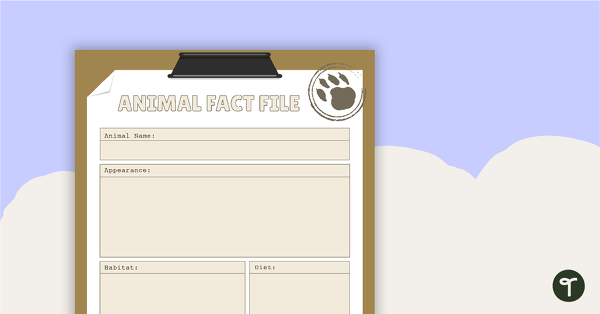
Animal Fact File Worksheet
An animal fact file for students to complete when learning about a variety of animals.
- Plus Plan
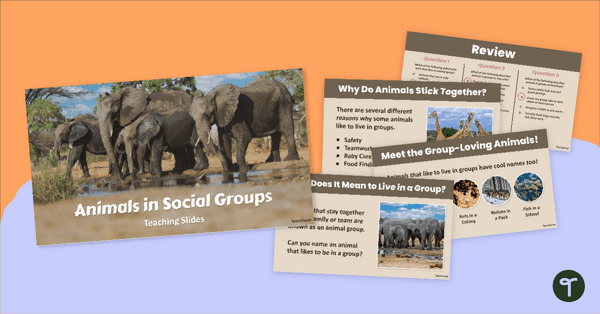
What Animals Live in Social Groups? PowerPoint Presentation
Discover what animals live in social groups and why with an engaging interactive Animal Behavior PowerPoint.